An official account of all species that have been recorded and reported by birdwatchers and naturalists in the Poole Harbour area since records began.
The data for this list has been extracted from various sources, but George Greens 'The Birds of Dorset', Mansel-Pleydell's Birds of Dorsetshire, Naylor’s reference manual of rare birds and the back catalogue of Dorset bird reports have provided most information. Data is currently still being researched and records will be updated accordingly.
You can view this information in two different ways. Our alphabetical list provides information on the status of each species within the harbour, finder dates and names, photos and favoured locations. By clicking on the Systematic List button you will be presented the full Poole Harbour systematic list which includes status of species, pending records and historical accounts.
To date, 333 species have occurred and have been accepted within the Birds of Poole Harbour boundaries. A further 11 distinct subspecies have also been seen. In addition, we have two species/subspecies which have been recorded, but are awaiting acceptance by the appropriate records panel.
There are a handful of historical records, for which there is currently insufficient information to allow their inclusion onto the Poole Harbour list, but are believed to be genuine records. They are listed at the end of the list.
Finally, there are a number of feral or escaped species that have been recorded within the Birds of Poole Harbour boundaries. They are included for completeness, but are not included on the Poole Harbour list.
We would be interested in hearing details of any species that do not appeared on this list.
The Birds of Poole Harbour systematic list is a PDF which you can view by clicking on the button below. It was last updated on December 2019.
Full Poole Harbour Systematic List
Magpie
Latin Name
Pica pica
Status
Resident
Site And Records Information
Found breeding right across the harbour, with semi large roosts of up to 100+ birds congregating in the winter at Hatch Pond.
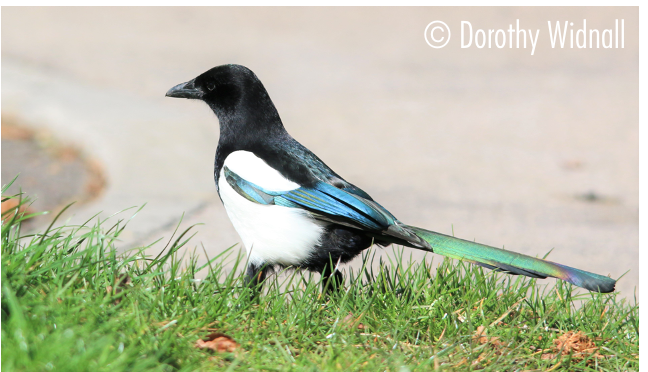
Mallard
Latin Name
Anas platyrhynchos
Status
Resident
Site And Records Information
“Presumed to breed on wetlands everywhere” Smith said in 1998. About a quarter of the Counties birds are in the harbour and numbers of birds in the harbour have not varied over the past sixty years. The largest resident flock is on the Frome at Redcliffe where there has been a summering flock of none breeding birds of around seventy for over twenty years. The harbour maximum is 1755 on the 12th November 1985. ‘Birds of Dorset’ states 1755 in Nov 1978. Otherwise as with the rest of the world the best place to find Mallard is the park. At one time one paired with a Mandarin duck on Hatch Pond.
Despite their affiliation with being ‘common’, recent WEBS data shows that less Mallard are actually present during the winter in harbour compared to 20 years ago. The average 5-year winter total population is 353 per winter.
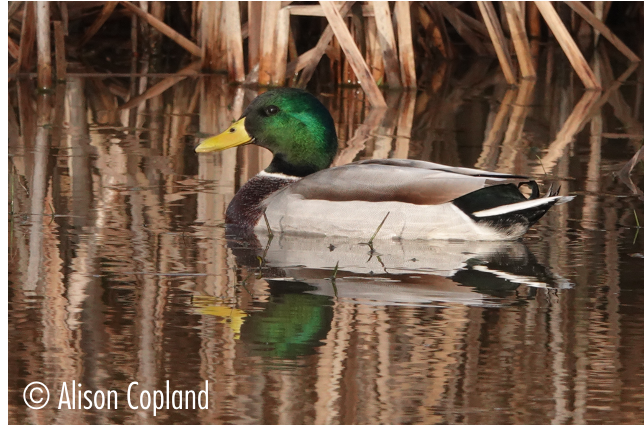
Mandarin Duck
Latin Name
Aix galericulata
Status
Scarce Feral Visitor
Site And Records Information
Secretive as they are, Mandarins probably used to breed in the harbour. If they did Creekmoor Ponds would have been favourable for exploring with 2 females at Creekmoor Ponds 3rd Jan 1997.
They used to be regularly recorded at Hatch Pond, Creekmoor Ponds and Poole Park . 1 pair bred at Broadstone Golf Course (outside the harbour recording area) in 2004 and up to 14 birds were present between August and Oct is that in the area of the same year.
A female visited Hatch Pond from 1997-1999 making this the best site to see Mandarin within Poole Harbour. Birds assumed to be from the breeding colony at Merley also got to Upton Country Park and Poole Park. A male was paired to a Mallard in Poole Park and was near the train shed through the spring of 1975. Another male was also released by Longfleet School in 1993 which seemed to disappear after 26th February 1995.
A recent record was of course the male which spent the 2018/19 winter period on the small Poole Park boating lake.
In recent years they’ve become regular breeders and over-wintering birds in the Piddle and mid-Frome Valley with confirmed breeding at Carey Secret Garden in 2021 and 2022. Plus, small groups of 3-8 individuals have been seen moving between Holmebridge and the Piddle Valley.
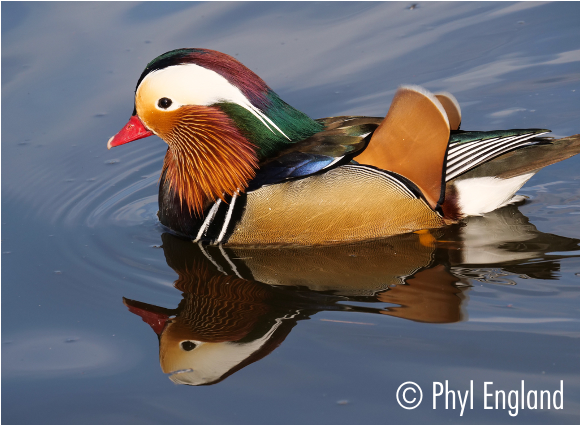
Manx Shearwater
Latin Name
Puffinus puffinus
Status
Summer Visitor & Passage Migrant
Site And Records Information
Scarce visitor, recorded annually in Poole Bay. Best looked for from Branksome or Flaghead Chines between May and July with with a high count of 70 there on 21st April 1999. Other records off Studland Bay occur too with the highest count of 93 was recorded in just 50 minutes, including one flock of 37, on the 11th July 2001 at Studland Bay. Other relatively large counts include 45 on 21st Jun 2007 and 38 on 15th June 2005. Sea watching out in Poole Bay from May to July in a south-east wind could/should produce Manx Shearwater. Recorded once inside the harbour on 7th Sept 1961.
Marsh Harrier
Latin Name
Circus aeruginosus
Status
Resident
Site And Records Information
Back in the late 1940s Poole Harbour had as many as 60% of the entire UK breeding population of Marsh Harriers with nesting recorded around Wareham Channel, Middlebere, Little Sea and Brownsea Island. 1949 saw the first signs of breeding at Keysworth and by 1954 there were five pairs breeding in the harbour at Little Sea, Keysworth, Middlebere and Brownsea. This gave a maximum number of birds in the harbour of 22 -10 adults and 12 young. However, breeding ceased in 1963 as the species suffered a catastrophic national decline and breeding wasn’t recorded again breeding in Poole Harbour until 2013 when a pair raised three young at Swineham. It was thought DDT, shooting, egg collecting, human interference and flooding of nest sites caused a decline back in 1963. Since 2013 one to two pairs nested successfully in the west harbour area each year with a clear potential for more, although sadly in 2017 they had stopped again. Thankfully by 2022 1-2 pairs were attempting to breed with success of at least 1 pair in 2022 and 2023.
Winter numbers have increased with double figure roost peaks now recorded in most years and a maximum count of 31 in December 2022. The birds` use of specific roosting locations can vary and although the main sites are found in the Wareham Channel reed beds, alternatives may be favoured at different times by either individuals or groups, e.g. Lytchett Bay, Middlebere, the Wytch Channel and Hartland Moor. During the winter foraging Marsh Harrier can be seen at many sites including Middlebere, Lytchett Fields, Holton Pools, Arne and Swineham.
Recent Totals:
2023
Breeding records:
Poole Harbour – 2 pairs raised 2 young. Both pairs were incubating from the second week of Apr and at one site, 2 fledged in late Jun/early Jul. At the other site a first attempt failed for unknown reasons (deer disturbance was thought likely) and a new nest was built, with eggs laid in May, but this attempt was also abandoned.
First winter period and spring passage (Jan-Jun):
Poole Harbour – Roosting numbers were again good, with up to 10 in Jan and Feb and 9 in Mar. Up to 5 birds remained present to mid-Jun. Passage birds moved N on 5th & 10th Apr. Most frequently seen during the day at Arne RSPB, Lytchett Bay (max of 5 on 4th Jan), Middlebere, Swineham and Wareham and from Birds of Poole Harbour bird boats.
Autumn passage and second winter period (Jul–Dec):
Poole Harbour – Seen frequently at many sites. Several passage birds were recorded in Jul and Aug. The roost increased up to max of 7 in Aug, 9 in Sep and a peak of 18 on 28th Oct, then 15 in Nov and 14 in Dec.
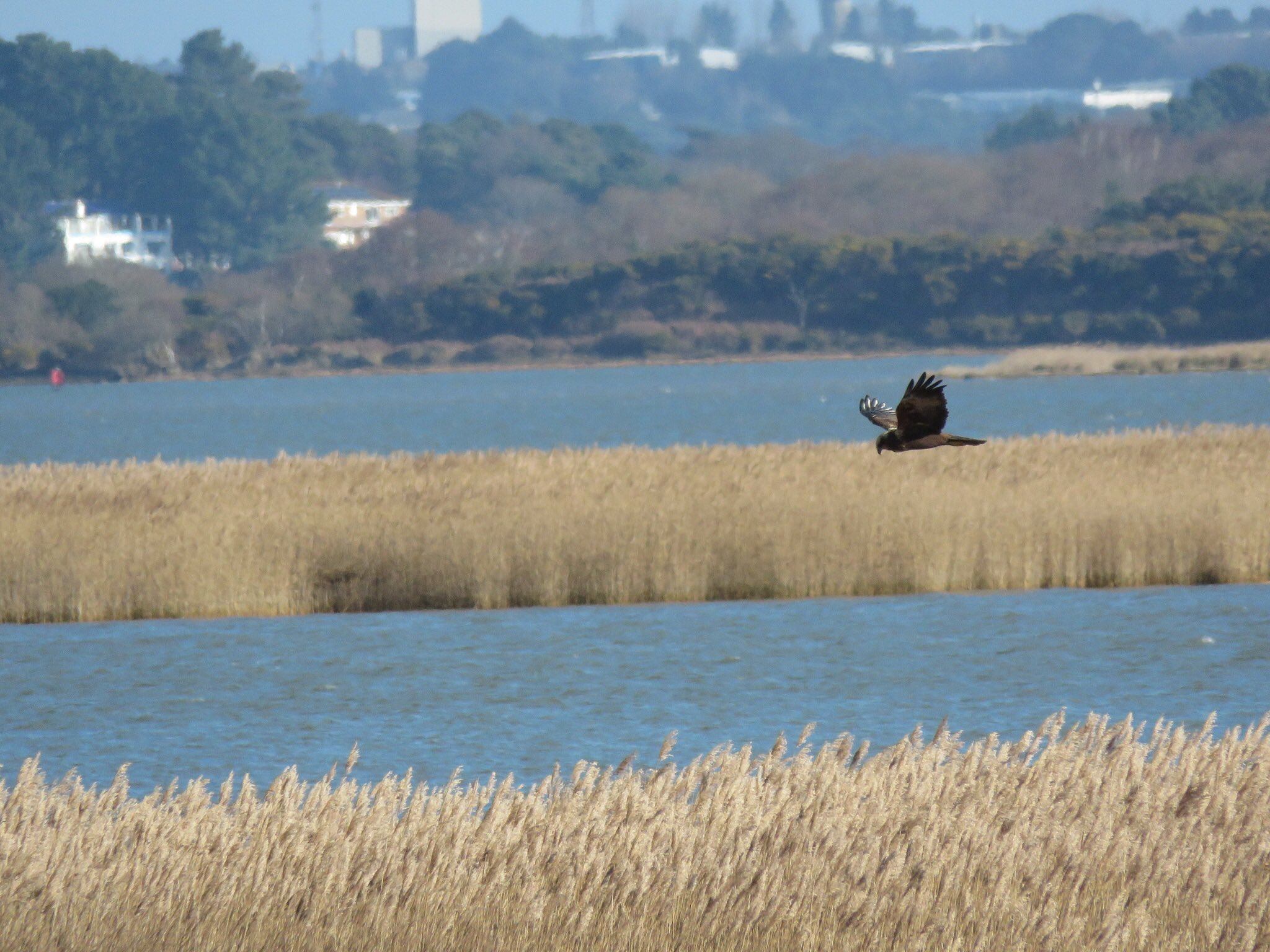
Marsh Tit
Latin Name
Poecile palustris
Status
Scarce Resident
Site And Records Information
The 1987 – 1994 Tetrad breeding survey described the central and southern parts of Poole Basin as a stronghold for a species that was at that time widespread in Dorset. Between 1968 and 1993 the number of pairs at Arne increased from 2 to 15. Arne car park was a guaranteed location to find this species until at least 2010. The 2008-2011 National Atlas survey revealed a 27% national decline in the 20 years leading up to the survey, though local declines in Poole Harbour, in distribution at least, were not identified.
Marsh Warbler
Latin Name
Acrocephalus palustris
Status
Vagrant
Site And Records Information
A very, very rare bird in Dorset with only a handful of records, despite its abundance on the near continent as a breeding species. Poole Harbour only has 1 record but its thought/hoped they could become more frequent over the coming decade as populations across Europe increase and now people are more familiar with their song.
1 on May 9th 2009 at Hatch Pond. Sound recorded (E.Brodie)
1 on May 29th 2020 at Bestwall, Swineham. Sound recorded. (P.Moore)
Meadow Pipit
Latin Name
Anthus pratensis
Status
Resident
Site And Records Information
Breeds on all the local heathlands with good numbers at Arne, Studland and Godlingston. Numbers fluctuate in autumn and winter especially out on open heathland where numerous groups of 50+ birds spend the winter feeding together. Meadow Pipit migration in the autumn can be quite spectacular with counts of 500+ passing over various parts of the harbour in the right wind conditions. Early morning at North or South Haven and Ballard Down in September and October are good places to watch.
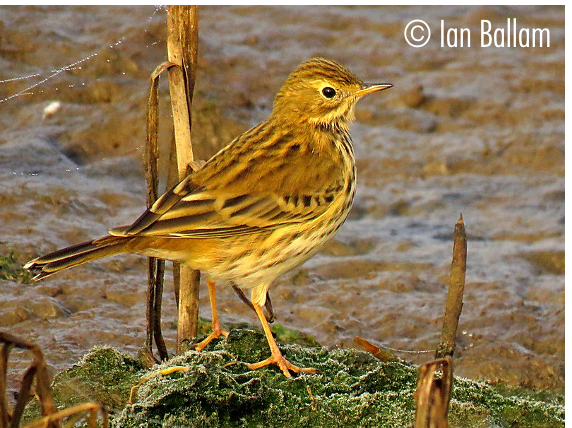
Mealy Redpoll
Latin Name
Carduelis flammea
Status
Rare Visitor
Mediterranean Gull
Latin Name
Larus melanocephalus
Status
Resident
Site And Records Information
Once a very scarce breeder, numbers have now soared with over 100 pairs breeding in the harbour. In the spring and summer they can be identified by their load cat like ‘meow’ as they fly to and from feeding sites. Their flight line takes them over the north-west of the harbour with Lytchett Bay and the Wareham channel seeing most records. In the winter birds are a bit harder to find within the harbour but hansom winter plumage birds can be seen feeding off the Studland Beaches mixed with other gulls. In spring many summer-plumaged birds can be found feeding along the shoreline of Whitley Lake and Baiter Beach on the low tide.
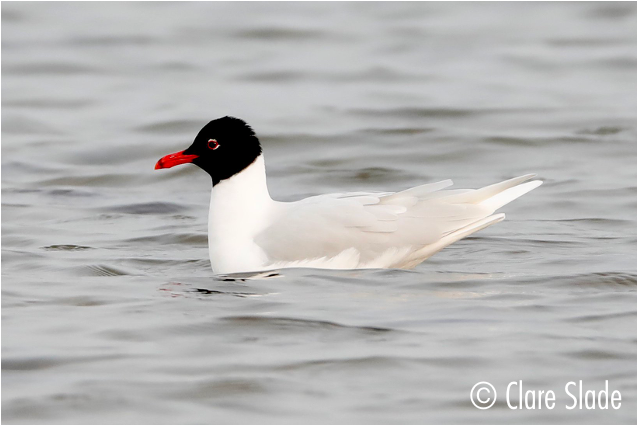
Melodious Warbler
Latin Name
Hippolais polyglotta
Status
Vagrant
Site And Records Information
Whilst Dorset occasionally attracts late spring migrants this has not yet been the case in the harbour. August is the peak month and Studland and Ballard Down the most likely areas to find one.
The western sibling to Icterine Warbler is an almost annual visitor to Dorset. There have only been 3 blank years since 1957. In 1979 there were 17 records but in most years only low single figures are found. In the harbour it remains a very good find, a ‘twitchable’ individual would be very welcome.
1 on 17th Aug 1975 at Studland (S.J.Aspinall)
1 on 1st Aug 1977 at Little Sea, Studland
1 on 25th Aug 2001 at Ballard Down (J.A.Lidster et al)
1 on 27th Aug 2001 at Swineham GP (N.Hull, J.Hull et al)
1 from 20th – 21st Aug 2002 at Ballard Down (I.Prophet et al)
1 on 13th Sep 2014 at Greenland’s Farm, Studland (Mark Constantine, Mo Constantine)
1 on 11th Aug 2015 at South Haven, Studland (G Armstrong, S Morrison, SW Smith)
1 on 14th Aug 2015 at Lytchett Bay (I Ballam, IM Lewis)
1 on 12th Aug 2017 at Greenland’s Farm (M Constantine)
1 on 15th – 28th June 2021 at Middlebere, Harrier Hide. A male in full song (I.Duckworth & P.Morton)
There is also a report that was never submitted or assessed. It is included here for completeness and any further information would be welcomed. 1 on 4th Sep 2004 at South Haven, Studland;
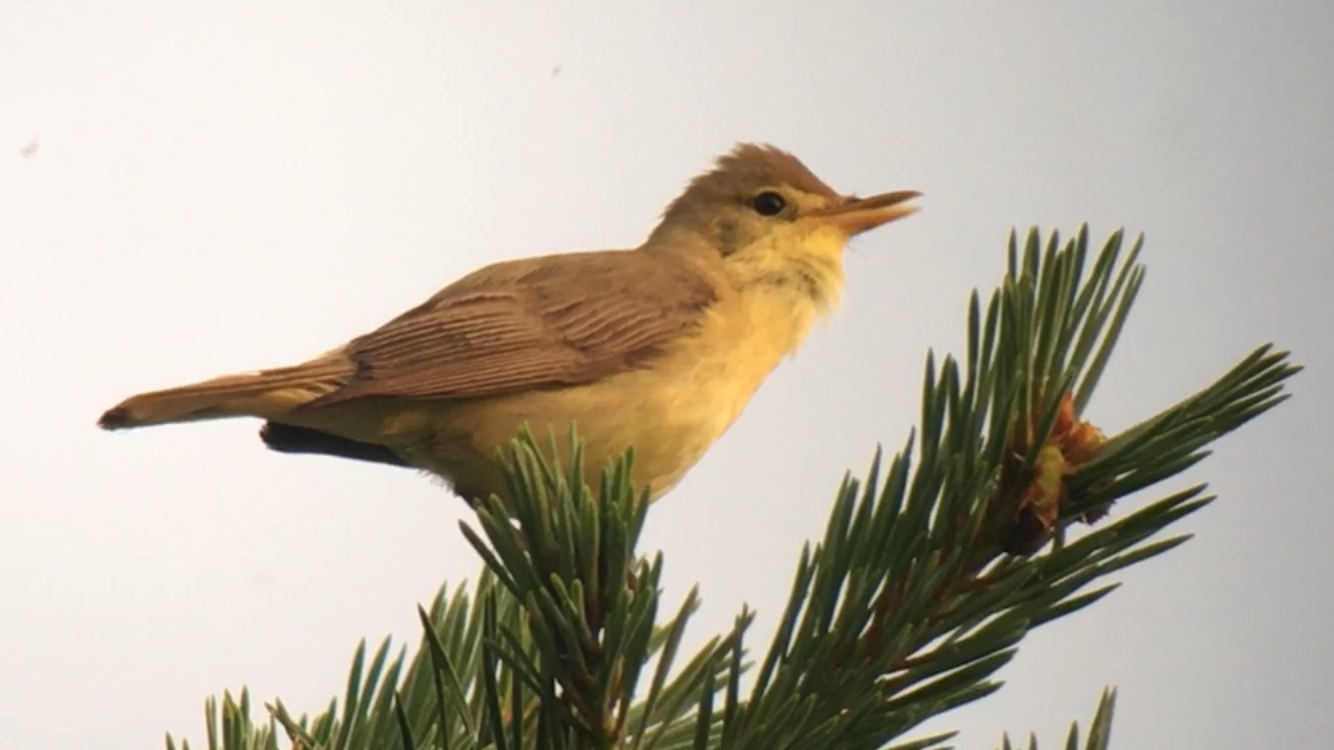
Merlin
Latin Name
Falco columbarius
Status
Passage Migrant & Winter Visitor
Site And Records Information
Merlin are best looked for in autumn and winter over heathland and tidal inlets around the harbour, when several birds may gather to take advantage of migrant passerine passage and over-wintering pipit flocks. During November, December and January individuals can be seen hunting most often in the Middlebere / Hartland Moor area although single birds can appear over any open ground where small prey is readily available, e.g. the Studland heaths, the Arne heaths, Arne Moors, Lytchett Fields, Brownsea Island lagoon and Lytchett Bay.
Wintering Merlin will roost either in bushes or on the ground in wetland and heathland areas. Two or three birds may be seen together wherever this occurs. They can sometimes be seen alongside Hen Harriers at the end of the day when the two species may hunt in tandem before settling for the night.
A historic maximum of 4 were logged at a roost near Wareham on 26th March 1987. The earliest record was on 6th September 1970 and the last on 27th June 1961 at Stoborough.
There’s not much change in status over the last sixty years for example in 1963/4, when you would expect it to be at its worst after the cold winter of 1962/63 there were 5 records up to March and 3 from October December.
A female found dead on Hartland in November 1995, had been ringed in Tayside on 25th June 1995.
Mistle Thrush
Latin Name
Turdus viscivorus
Status
Resident
Site And Records Information
Seen in ones and twos around the harbour with Greenlands Farm, Arne, Holton Lee and Studland being reliable sites. Recently post breeding flocks of up to 50 birds frequent Arne in late summer/early autumn with other post breeding flocks occurring at sites including Canford Heath and the Corfe River Valley.
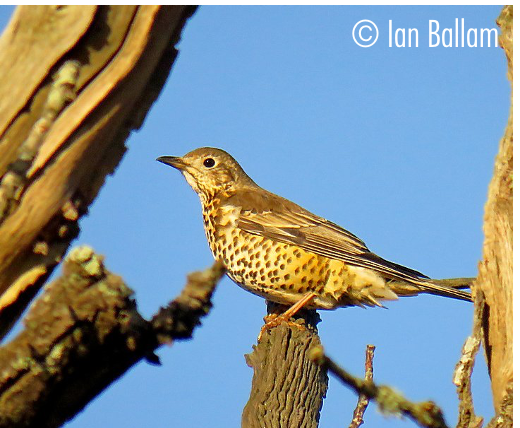
Montagu’s Harrier
Latin Name
Circus pygargus
Status
Scarce Passage Migrant
Site And Records Information
Montagu`s Harriers have tended to be seen either in spring (May is the peak month) or late summer (August) as occasional individuals passed through the area on the way to and from established nesting areas. These included Dorset up to 2004 although not since. As a consequence records of this species have become less frequent. As this species has become scarcer, Pallid Harrier is becoming more frequent, in a British context if not yet a Dorset one. Observers of suspected Montagu’s Harriers in the future need to bear this prize in mind, especially in autumn.
Sightings tend to be from along the southern shores of the harbour with Arne/Hartland and Studland being the favoured areas.
The earliest record is of a ringtail over Godlingston Heath on 15th April 1983. The latest, is an old record which is particularly notable, 1 on 28th Dec 1959 in “Poole Harbour” (BoD, GG, 2004)
All recent records:
Ringtail on 6th and 7th May 1967 at Arne (H.G.Alexander)
Ringtail on 7th May 1967 at Ninebarrows Down (S.P.W Corbett) possibly same as above?
Ringtail on 18th to 23rd May 1969 at Hartland Moor/Arne (P.Hawkins et al)
Ringtail on 23rd May 1969 at Godlingston Heath (P Hawkins et al)
Male on 26th May 1969 at Arne (B.Pickess)
Melanistic ringtail on 10th May 1981 at Godlingston Heath
Ringtail on 15th Apr 1983 at Godlingston Heath
Ringtail on 25th Apr 1988 at Poole Hospital which stunned the observer as he cycled past (Ma Constantine)
1 on 2nd Sep 1990 at Arne
Male on 22nd Jul 1991 at Upton CP
1 on 23rd and 25th Jul 1993 at Bourne Bottom, Parkstone
Ringtail on 26th Apr 1995 at Lytchett Bay (S.Robson, N.Symes)
Ringtail on 3rd Aug 1996 at Keysworth (I.M.Lewis, S.Robson et al)
Ringtail on 28th Aug 1996 at Ower (H.G.Wood-Homer)
Male on 26th Jul 1997 at Arne (I.H.Southworth)
Juv on 9th Oct 1998 at Middlebere (Ma.Constantine)
Ringtail on 6th May 2000 at Studland (Mo.Constantine)
Ringtail on 13th May 2000 at Arne Moors (Ma Constantine & Mo Constantine)
Ringtail on 13th May 2003 at Bestwall (I.Prophet)
Female east on 25th Aug 2007 off Ballard Down (S.W.Smith)
2nd Cal yr Male from 13th to 20th May 2008 at Harland Moor (J.A.Lidster et al)
1 juv on Coombe Heath, Arne on 31st Aug 2012 (J.Mitchell)
1 juv over Lytchett Bay and Lytchett Fields RSPB on 31st Jul 2017 (I.Ballam, G.Owen). This is the second record for the site.
Moorhen
Latin Name
Gallinula chloropus
Status
Resident
Site And Records Information
Moorhen are very common around the harbour and breed in Poole Park, Little Sea, Upton Country Park, Brownsea, Arne, Holton Heath, Brands Bay, Lytchett Bay, Wych, Middlebere, Greenlands Farm, Ower, Hatch Pond, Creekmoor Ponds and along both rivers. Could be between 50 and 250 breeding pairs in the 100 miles + of suitable habitat in Poole Harbour and yet the maximum count for the harbour is only 40 during recent WeBS counts. The maximum for a single site is 39 in Poole Park in March 1987.
In December 1977 ‘Boys’ mentions in the Dorset Bird Report a “melanistic bird noted at Holton.” Also interesting is a bird “ringed in Poole on 10th December 1967 as a 1st year bird and re-caught at the same site on 23rd February 1968. It was then killed by a cat on 20th June 1968 at Bad Schwartau, Schleswig Holstein in Germany”.
It’s also been recently learned that Moorhen are incredibly active at night either migrating or possibly carrying out territorial flights. Nocturnal listening stations located at different sites around the harbour have sound recorded many Moorhen passing over areas at night, including strange areas like Poole Town Centre and the headland at Ballard Down.
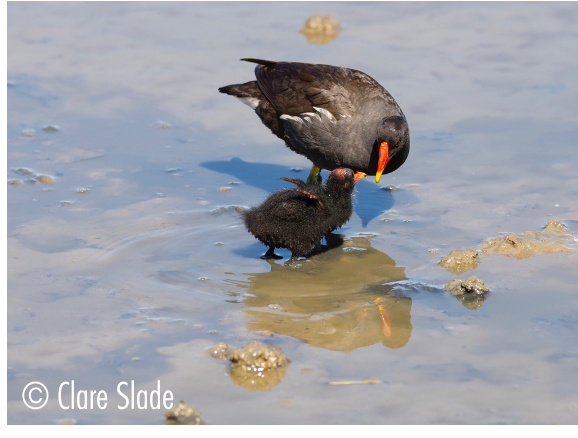
Mute Swan
Latin Name
Cygnus olor
Status
Resident and winter visitor
Site And Records Information
There about 10-20 breeding pairs scattered throughout the harbour each year. There are usually a pair or two on the River Frome, River Piddle, Brownsea Island, Hatch Pond, Poole Park, Brands Bay, Little Sea, Ham Common, Arne, Middlebere, Swineham and Holes Bay.
There is also a non and post-breeding herd at the mouth of the Piddle in the Wareham Channel that builds up in the summer and regularly holds 150 birds, with a maximum of 219 on the 16th August 1999. The water meadows besides the Frome between Worgret and East Holme also hold non breeding Mute Swan with 44 birds there in the 1978 census. Young Mute Swans arrive here to moult in the winter from Abbotsbury and other local breeding populations may also be moving back and forth across the channel. A bird ringed in Poole Park on 15th January 2000 was found dead near Charbourg in France on 9th Sept 2002.
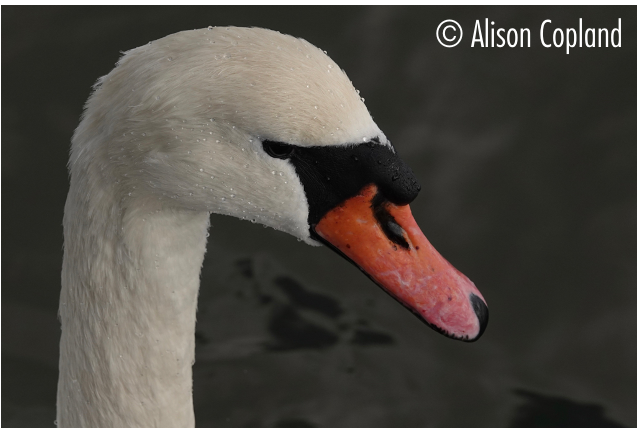
Call 01202 641 003
© 2025 Birds of Poole Harbour Registered Charity No. 1152615
